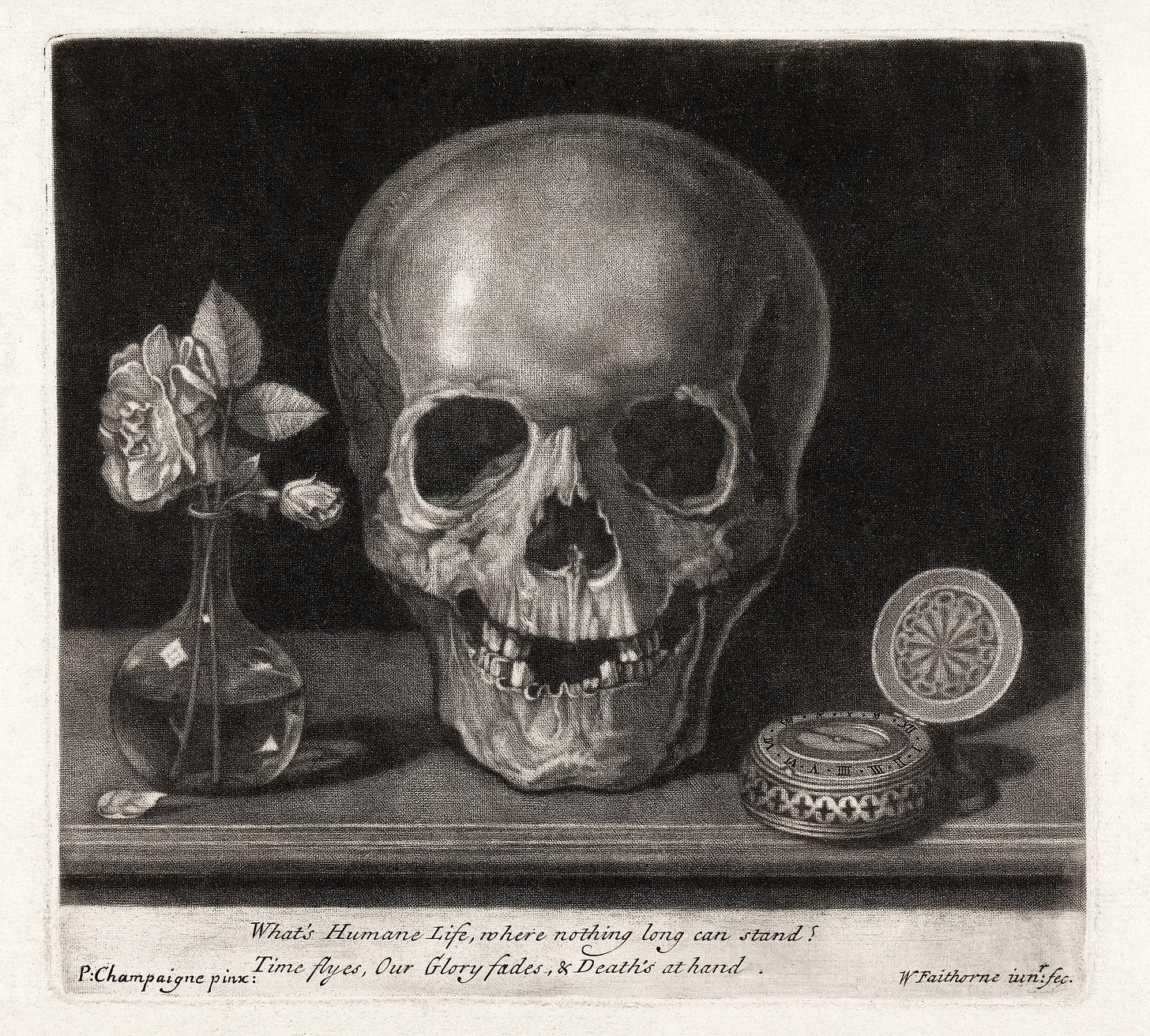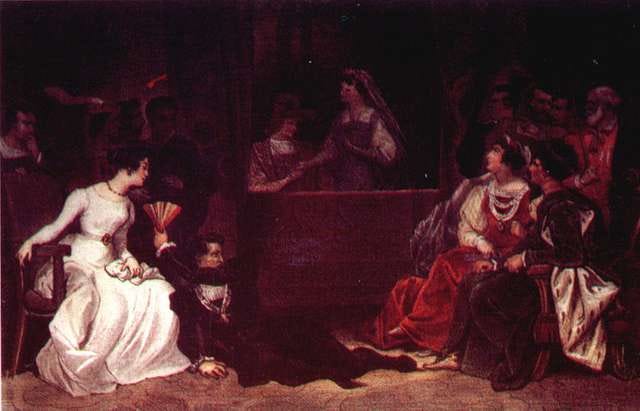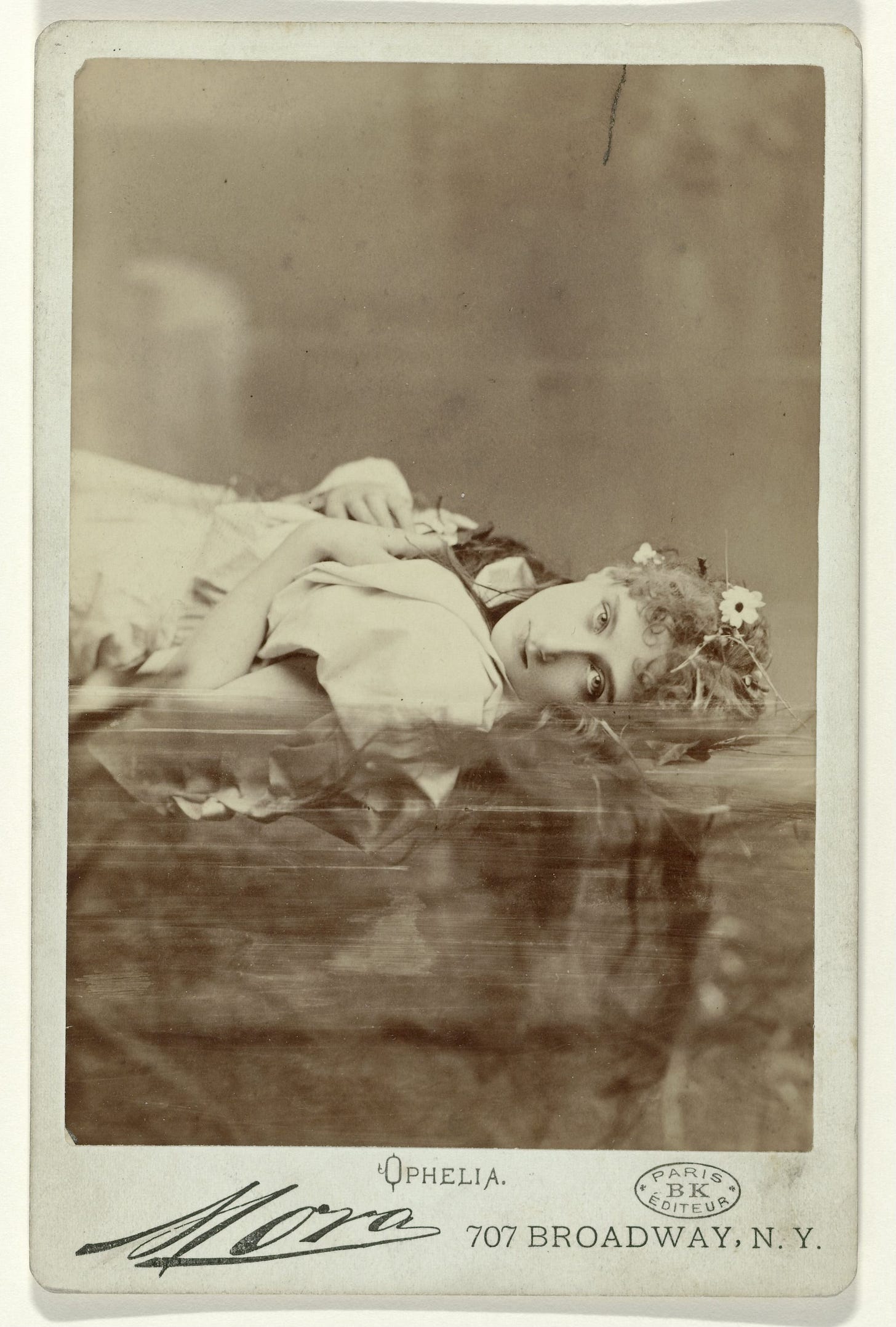In the tragic Shakespearean play Hamlet, the protagonist faces countless instances of deceit, betrayal, and grief reacting with irrational responses throughout the play. However, the motivation behind each of the protagonist’s actions lies in his identity as a liminal character. Hamlet occupies the ambiguity between a multitude of dichotomies, most notably life and death. Through the contrast of a wedding and a funeral, conversations with the living and the dead, the compromising of his sanity through the deception of madness, and his indecision on revenge and morality, Hamlet’s motivation can be characterized by a raging against his ambiguous state. He is defined by his longing to realize his identity as either living or dead, articulated best by the opening lines of the Laurence Olivier film adaptation as “the tragedy of a man who could not make up his mind.”
The initial dichotomy for Hamlet is that of his father's funeral and the marriage between his mother Queen Gertrude and his uncle King Claudius. This contrast acts as a foreshadowing of Hamlet’s descent into a liminal state as he begins to express his disdain for the abrupt shift from mourning to celebration. This also marks the beginning of Hamlet’s sense of isolation, as his disturbance is unmatched by those around him: “The funeral meats/ Did coldly furnish forth the marriage tables (Shakespeare 38),” he laments to his friend Horatio. It is his grief, suspicion, and disgust that primes him to slip into a state of ambiguity later in the play.
The wedding is preceded by an opening scene where two guards, Marcellus and Bernardo, and Horatio, encounter an apparition whose face resembles Hamlet’s father, the late king. This scene also acts as a foreshadowing event as despite Horatio’s urging for the apparition to speak it remains silent, the group understanding that it is Hamlet alone who is capable of conversing with the dead: “This spirit, dumb to us, will speak to him (33).” Already, both Hamlet’s fate and identity are established as a hesitant but clear understanding dawns on the initial three characters.
The ghost of Hamlet’s father is symbolic of a complete transition from a state of definitive life to that of obscurity. Horatio, Marcellus, and Bernardo take Hamlet to see the apparition on the second night. Upon first sight, Hamlet is both hesitant and compelled towards the ghost. He questions its origins and intents but ultimately when he is beckoned, he follows despite the pleading of his comrades. The ghost leads him away and begins to describe his existential predicament: “I am thy father’s spirit/ Doomed for a certain term to walk the night,/ And for the day confined to fast in fires (49).” In these lines, the spirit establishes himself not only as a symbol of transition into the liminal state but also as a parallel to Hamlet himself. It is no coincidence that the two characters share the same name, as the purgatory of the ghost reflects the purgatory of Hamlet. Both are trapped in their respective worlds but through interaction with one another bind themselves to the obscure third space introducing the second but ultimate dichotomy of the play.
Furthermore, the ghost introduces a third contrast to establish Hamlet’s liminal state. He explains the conspiracy behind his death, naming Claudius as his killer: “the serpent that stings thy father's life/ Now wears his crown (50).” This knowledge initiates the central plot of the play giving a name to Hamlet’s rage against ambiguity: revenge. Equipped with a justified figure of evil to direct his anger, Hamlet becomes solidified as a liminal character beginning his tragic trajectory.
After his encounter with the apparition, Hamlet establishes the third dichotomy of his state. Intent to enact a revenge plot upon Claudius, he decides to deceive both his parents and the court that he has succumbed to madness. He begins with the character of Ophelia whom he has already expressed affection for at the behest of her father Polonius, Lord Chamberlain of the court. Similarly to the ghost, Ophelia’s character is both symbolic and parallel to Hamlet. Though rather than representative of his state, Ophelia reflects Hamlet’s desire to be realized in either sanity or madness for Hamlet’s deception obscures the line between the theatre and the reality of mental illness. Ophelia’s role as the first victim of his deceit is intentional, foreshadowing the tragedies to follow.
Hamlet’s encounter with Ophelia compels Polonius to report to King Claudius and Queen Gertrude. During this conversation, Hamlet listens in and begins to perform his madness for Polonius while his mother and uncle hide and watch. The exchange draws a parallel from the opening wedding scene as Hamlet adopts a cheerful tone at a time of expected sadness. As such, the performance serves not only to aid in the over-arching revenge plot but to reveal the hypocrisy of the court whereby what they interpret as madness in him they deem sanity in themselves: “...a happiness often madness hits on,” remarks Polonius to the King and Queen, “which sanity and reason could not prosperously be delivered of (66).”
To further expose, not only Claudius but the allegiances of the court, Hamlet devises a plan to perform a play that simulates the crimes of his uncle. This literary choice pulls the audience into an empathetic ambiguous state where a form of ‘meta-parallelism’ is employed. This Shakespearean motif serves a particularly poignant purpose in the play as it brings the growing sense of the liminal out of the play and onto the observer. Moreover, it parallels actions within the play itself placing the audience in the same purgatory that plagues Hamlet and the ghost.
Upon seeing the play's result, the court is sent into a frenzy with King Claudius and Queen Gertrude storming from the hall and a courtier urging Hamlet to comfort his mother. Hamlet agrees but first, he follows his uncle intending to hear his confession and take revenge. Before Hamlet enters King Claudius’s chambers, the audience gains an insight into what is either remorse or regret at being found on the part of the king. In any case, King Claudius is revealed to be more cognizant of the same questions of morality that Hamlet faces. “What if this cursed hand/ Were thicker than itself with brother’s blood/ Is there not rain enough in the sweet heavens/ To wash it white as snow (97)?” Similarly to the ghost, King Claudius is caught in a purgatory reflecting Hamlet’s. Rather than being caught between life and death, he is caught between his power hunger, and his morality.
When Hamlet enters and observes his uncle, he is struck with a clarity of this moral purgatory. He realizes that in killing King Claudius he is granting him what Hamlet desires, to be freed from ambiguity. Additionally, he fears that the crime will absolve his uncle of wrongdoing: “A villain kills my father; and for that/ I, his sole son, do this same villain send/ To heaven (98).” King Claudius becomes an untouchable enemy, rendering Hamlet void of a figure of evil.
Despite his resolution to spare his uncle, Hamlet’s visit to his mother further plunges him deeper into the ambiguous state he so desires to be freed from. Before Hamlet enters, Polonius hides behind the curtain at Queen Gertrude’s instruction. Upon entering, Hamlet bears all his accusations explicitly to his mother to show the true absurdity of the situation: “You are the queen, your husband’s brother’s wife (99).” Similarly to King Claudius, Queen Gertrude reveals her remorse, allowing Hamlet to gain more insight into the ever-complicating plot. However, when Polonius rustles behind the curtain Hamlet mistakes him for the King and stabs him through the cloth. His prior clarity at the King’s lamenting disappears as he suspects yet another betrayal from his mother and uncle.
The death of Polonius cements Hamlet in the ambiguity of morality for now his crime matches that of King Claudius. Furthermore, as he cries out to the ghost of his father who cannot be seen by his mother, he slips more definitively into the liminal space between madness and sanity, life, and death. “To whom do you speak this?” asks the Queen “Do you see nothing there?” Hamlet replies (103). Hamlet is forced to reckon with each dichotomy at once, the incestuous marriage and his father’s funeral, sanity and madness, revenge and morality, and conversations with the living and the dead. Here his mother has betrayed him more deeply than ever before, by exposing him to his own purgatory and shaking the very foundations of what he knows to be true and false.
In the wake of Polonius’s death, Hamlet is forced to flee to England and in his absence, the significance of Ophelia’s symbolism is expounded. Due to Hamlet’s manipulation throughout the play and the death of her father, Ophelia descends into a fatal madness, eventually drowning in a river. In her end, Ophelia realizes several aspects of each dichotomy, which Hamlet is incapable of doing. She descends fully in madness, she commits to her death through suicide, remains pure till her death, and is perceived as the victim which absolves her of regret. Ophelia’s death contextualizes Hamlet’s conflicting attitude towards her throughout the play. His affection reflects his admiration, and his cruelty reflects his jealousy for she is afforded absolute madness, death, and purity, foregoing a state of purgatory.
The tragic succession of revenge continues when Ophelia’s brother Laertes learns of the deaths of his sister and father. Laertes and King Claudius, intend to enact their revenge upon Hamlet by challenging him to a fencing duel but secretly using a sharp, poisoned blade instead of the traditional foil. To ensure the death of Hamlet, King Claudius poisons a goblet of wine so that if the prince happens to win, he will die in celebration. Hamlet cuts Laertes with his own sword in the duel but not without being cut by the poisoned blade himself. His mother accidentally drinks from the poisoned goblet of wine and in his ultimate vengeful rage, Hamlet runs Claudius through with the poisoned blade.
While this violent ending bears all the signs of a classic tragedy, it is the singular moment of relief for the character of Hamlet. In realizing the plot of Laertes and King Claudius he gains sanity, in being poisoned he gains death, in killing King Claudius he gains revenge, and in being unfairly plotted against, he gains absolution. It is no coincidence that the protagonists' final words are “rest is silence (147),” for every action of the play is motivated by the restlessness of a living purgatory. In death, Hamlet’s identity transforms from that of a liminal character, haunted by the dead and haunting the living, to that of a noble memory. While tragic, the play resolves each dichotomous crisis for its protagonist leaving the audience with a sense of mournful certainty that Hamlet’s death is longed for and final.








